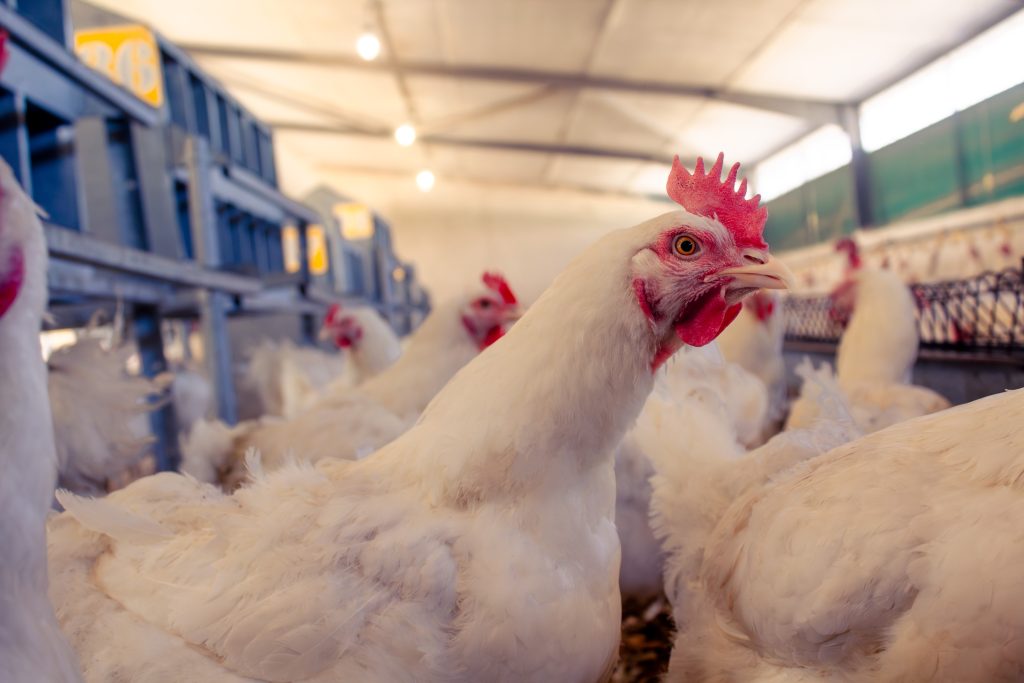Over the years, poultry farming has become highly intensive, with significantly high bird populations in each house, farm, site and farming area. Consequently, farms face ongoing challenges related to disease management. An efficient biosecurity programme is therefore critical to mitigate the risk of entrance and the spread of diseases within a farm, site and area. Let’s take a closer look at biosecurity best practice on a poultry farm.
Biosecurity – your first line of defence
Biosecurity is the first line of defence in the fight against diseases on farms. It entails various measures to prevent birds from coming into contact with disease-carrying vectors such as people, wild birds, rodents, vehicles, other animals, feed and farm equipment.
Each farm or operation must thoroughly assess disease risks to implement measures to minimise those risks. While biosecurity measures cannot guarantee complete prevention of disease introduction and transmission within a farm, it is essential to initiate efforts and make continuous improvements. It is important to seek advice from knowledgeable and experienced professionals such as veterinarians when assessing the risk, and implementing preventative measures.
Biosecurity programmes should be applied consistently, and everyone must respect and adhere to the protocols implemented. It must be practical and easily understood by everyone. Overly complicated, impractical biosecurity programmes, are likely to fail. It is therefore critical that all personnel have a complete understanding of the biosecurity programme. Regular training is also imperative to keep everyone vigilant, even when disease pressure is low. Training records must be kept, and all trained personnel must sign to acknowledge their participation, commitment and adherence to bio-security protocols.
Control access to farms
Some studies indicate that 90% of diseases are transmitted from farm to farm through contaminated vectors. Access to a poultry farm therefore needs to be strictly and properly controlled. The farm must have a well-developed perimeter fence, defining the biosecurity zone. All movement in and out must be strictly controlled for all vectors. Individuals entering the farm must go through a changeroom where personal clothing is left behind, a shower is taken and clean farm clothing and gumboots are worn.
Disinfect all vehicles entering and leaving the farm with an appropriate disinfectant. The entire vehicle must be sprayed properly, including the undercarriage area. This is best achieved by the installation of a spray race. A spray race is able to dispense the disinfectant solution from all angles. However, manual spray equipment with sufficient pressure to remove excessive dirt on the vehicle undercarriage and body can also be used.
Provide foot baths with fresh disinfectant at the entrance of each poultry house. All individuals entering or leaving must dip their feet properly. Additionally, install hand sanitisers at the shower block and in each house, to ensure hands are disinfected between houses.
Maintain a clean environment
Keep the farm neat and tidy at all times, with no feed and water spillages or materials that may attract rodents, wild birds or any other animal that may carry disease.
Movement of vectors such as equipment, tools or any other item must be avoided. If such movement happens, the items must be disinfected before they are moved to another house.
The farm must be cleaned and disinfected properly after each cycle. A sufficient resting period (time between disinfection and placement of new birds) is needed to reduce field viral load. This is achieved easier in an all-in-all-out system whilst challenging in a multi-age farming system.
Consult with professionals such as veterinarians to give a thorough assessment of the risks and preventative measures required. All chemicals used must also be tested from time to time. This will ensure they are effective against disease-causing organisms they are intended to eliminate. Proper training of farm personnel is essential in this regard, to ensure safe handling and correct dosing of such chemicals.
Conclusion
In conclusion, bio-security protocols can vary from one farm to another, depending on the risk assessment. For instance, biosecurity measures implemented for long-living birds, such as breeders and layers, will be more stringent than those of broilers, which have a significantly shorter cycle. Since biosecurity is a preventative measure, it is always advisable to do as much as possible and to continuously improve these systems.
References available on request
Click here to view the Meadow Feeds poultry product range.




